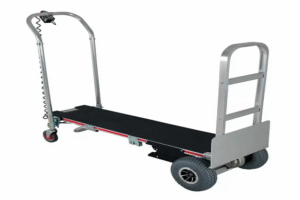Unlocking Possibilities: Why EMI Is the Future of Shopping in India

Over the last ten years, the purchasing power of India’s consumer line has been greatly uplifted. There was a time where an Indian consumer would save for up to twelve months to afford a product. However, times have changed and now the buyers prefer to go to the shop and decide for themselves or compare the products online and make the purchase without full payment. They are allowed to pay in installments (EMIs) which are usually split into some months. Be it buying stuff on EMI such as a cell phone or home gadgets on EMI, the switch has become the new way of making purchases, budgeting, and improving the country.
It is true that EMI has become more than just a payment method but a new lifestyle. With EMI, technology and comfort are now within reach of the masses, basically, for anyone living anywhere in the country. However, the EMI revolution marks a more profound transformation in people’s mindset and their daily life, one where awareness and accessibility come together and opportunism gives way to timeliness.
The Previously Held Convictions vs the Current Wallet
People in India used to decide on large purchases only after calculating every cost and frequently before the big day, the family would have to have no other plans but to stay on a tight budget and even on some occasions, they would spend all their reserves just to own a new TV set, smartphone, or a washing machine. The respect for money was particularly strong in the middle class who exhibited it through their obsession with ownership.
However, the truth of the matter is that in the present era, wants are changing at a rate that savings are simply not matching on time. A phone has become a necessity ever since the kids started with online classes, a fridge has turned into a must-have for the summer period, and the company has made it clear that a laptop upgrade is a necessity. It should be understood that situations like choosing a mobile or electronic gadgets on EMI are not any more about luxury, but about lifestyle support.
This is the very place where EMIs bring a fundamental and, at the same time, powerful answer.
Accessibility for All: Not Just a Metro Phenomenon
Although EMI adoption has been happening for a long time in the metros, the actual change is happening in Tier 2 and 3 cities. According to a 2023 CRIF High Mark report, over 60% of an annual 1.8 crore consumer durable loans were made in cities other than the top ten. This proves that the sale of electronics on EMI is not only an urban class endeavor – it’s all over the country. From the highly advanced to the most prospective.
Imagine a businessman located in Nashik, Maharashtra who has a requirement for a new smartphone for customer order management, payments, and social media. Though the sum of ₹30,000 may be difficult for him to pay with the current cash inflow, when he chooses a mobile monthly EMI payment of only ₹2,500 he will find that his business has not slid into obscurity one bit.
Behavioural Economics: Why EMIs Work So Well
From the aspect of psychology, it has been observed that people are inclined to say ‘yes’ to smaller regular payments than wholesale one-time ones. This is the reason why both subscription services and recurring bills are part of our budgeting—a more methodical approach when money is not a problem.
EMIs are based on the same logic wells. A commodity may sound expensive at the beginning of ₹50,000, but at ₹ 4,166 per month the payment is more acceptable and sounds more convenient than the former. This is of significant importance, especially for Indian families who are largely dependent on a monthly budget system.
Tech Upgrades Without Sacrificing Financial Security
One of the primary benefits of keeping with the latest tech products by the use of EMI is the access to expensive, but top-notch, electronics. It is seen that the majority of buyers usually make explicit choices in deciding on product models based on the budget constraints forced on them at the time of the purchase. However, when the costs are shared and paid for overtime, doing a frugal and timely change such as getting a more power-efficient fridge, a higher speed laptop or a larger screen TV becomes feasible to the customers without overly straining their pockets.
Definitely, by not just adding to the user experience, it very often results in savings that last over a long period. For another, a more expensive fridge will spare you a lot of money on electricity in the course of the year, despite the fact that it requires a bigger initial investment. Also, a more efficient laptop will use less time on work which in turn will lead to a possible increase in the earnings.
What a view! In some respects, EMIs are not only more affordable but they also talk about becoming a smart consumer or about a wiser user of money.
Mobile on EMI: Not a Luxury, But a Necessity
We absolutely can’t neglect the role of mobile phones day in and day out in Indian life. The whole system really depends on smartphones while using banking, government services, education, and job applications. A mobile on EMI ensures that even lower-income households are able to afford decent devices without having to give up features like storage, camera quality, or battery life.
Another remarkable point is that it narrows the digital divide. A student from a remote village, who has a smartphone financed by EMI, can participate in virtual classes, practice coding, or take the entrance exam simulation tests if they’re interested — something that was impossible for students only in cities.
What to Keep in Mind Before Choosing EMI
Like all finance options, EMIs should be used with a clear plan and controlled consumption. Obviously, not every one of them is created equal. There are zero-interest deals, but then there are also schemes with processing fees or even charges at higher rates of interest that might not be visible right away.
Always make it a point to go through the terms and conditions, compute the total repayment amount, and see to it that you don’t overdo it with borrowing. Here, a good practice is that the EMI obligations for the whole month should not exceed 30% of your net monthly income.
Also, make sure to align EMI tenures with the product’s useful life. For instance, a 24-month EMI for a mobile phone may not be ideal if you are likely to upgrade within a year.
Final Thoughts: India’s Financially Agile Abode
Money has always been an object of joy in the Indian shopping future, not a tool for getting rid of its allowance. The future of shopping in India is not about extravagance — it’s about empowerment. It’s about enabling individuals and families to make purchases that improve their lives without compromising their financial wellbeing. The growth of mobile on EMI and electronics on EMI is a reflection of this shift.
Through affordability, flexibility, and accessibility, EMI has ceased to be only a payment tool, and it has taken on the hues of a financial strategy for the contemporary Indian consumer. Once consumers are educated and credit systems are extended, we are looking at a future where buying better no longer means spending more all at once.
The payment system has been evolved so that it has gone from just a feature on the payment page but has emerged as the idea behind it all. This is the new mode of empowerment of India in the financial space, where it will be both more secure and comfortable.






